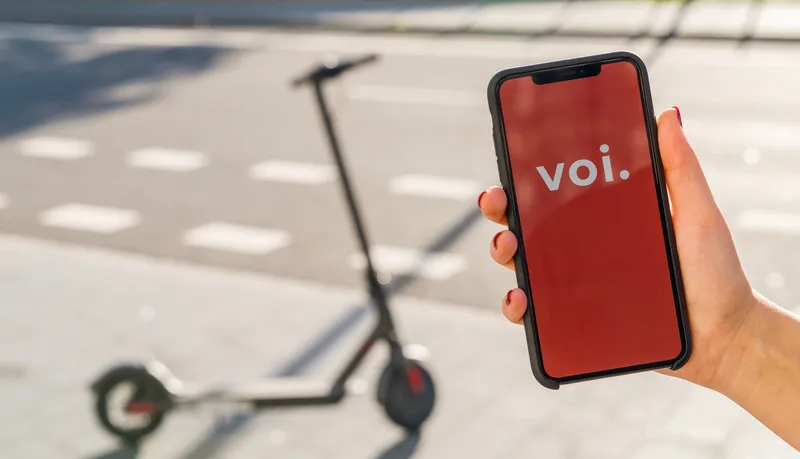
In December, the European Commission presented its long-awaited Sustainable and Smart Mobility Strategy. The document will be a central pillar of the Green Deal, the Commission’s policy initiatives for making Europe climate-neutral by 2050.
The Sustainable and Smart Mobility Strategy is built upon previous Commission initiatives including the 2011 white paper Roadmap to a Single European Transport Area – Towards a competitive and resource-efficient transport system. It goes hand-in-hand with other policies, such as that for energy, to achieve the ambitious goal of a 90% reduction in transport-related greenhouse gas emissions by 2050.
Several regulatory actions are expected from 2021 onwards to improve the environmental performance of the transport sector while supporting its modernisation. These actions will include increasing the market uptake of zero-emissions vehicles, development of sustainable alternative solutions for the public and businesses, boosting digitalisation and automation and improving transport connectivity and access.
In terms of sustainability, our sector is highly committed to international goals not just in the reduction of greenhouse gas emissions. We embrace the European Union circular economy – the optimisation of energy consumption, use of natural resources, adaptation to climate change and protection of critical infrastructure against human and natural disasters.
The revision this year of both the Alternative Fuel Infrastructure Directive and the TEN-T Regulation will be the first action to ensure a robust network - a million public charging points to be available by 2025. The future regulatory framework will facilitate market uptake of lower- and zero-emissions vehicles. It will also accelerate the development of an efficient charging and refuelling network for electric and hydrogen vehicles.
Regulatory frameworks
However, for a more affordable new mobility, several challenges remain. National authorities must develop regulatory frameworks to eliminate technical barriers and get more information to mobility users. Governments should promote the use of green vehicles for public fleets, company cars and car-sharing.
Policymakers must consider our sector an ally when adapting existing urban infrastructure for more walking and cycling. In fact, many national governments already include specific actions for this within their preliminary national plans submitted to the European Commission last October. The objective is to benefit from the coming EU’s Recovery and Resilience Facility as from this year. Further collaboration with the ERF is needed to coordinate the construction and maintenance of dedicated spaces with safety barriers, signs and markings for vulnerable users.
Digitalisation agenda
Digitalisation has two objectives. Firstly, it promotes a more competitive and modern sector that is able to create quality jobs, to encourage new business models that integrate start-ups and create more globally-competitive European companies.
Secondly, digitalisation provides real-time information to optimise traffic management and boost road capacity. Meanwhile, it helps reduce congestion and pollution but increases road safety.
The revision of the ITS Directive for deploying intelligent road transport systems and for developing interfaces with other modes of transport will help ensure cross-border interoperability and the availability of data to support new services. Connected and autonomous mobility is already in pole position at this point.
In parallel to the ITS Directive is 2019’s European Union Directive 2019/1936 on Road Infrastructure Safety Management and the General Safety Regulation. It allows for the correct roll-out of connected and autonomous mobility as well as development of physical infrastructure to keep the roads safe. It should also boost EU leadership on safety at the global level.
In addition, active support for research and innovation is confirmed through European partnerships such as CCAM and 2Zero. The aim of CCAM - Cooperative, Connected and Automated Mobility - is to advise and support the European Commission in open-road testing and setting up pre-deployment activities for connected and autonomous vehicles.
Fostering uptake
Meanwhile, 2Zero - Towards Zero-emission Road Transport – will help develop research for zero tailpipe emissions and foster the uptake of resulting technologies. Both CCAM and 2Zero groups combine business and research vision with policy guidance.
A common vision for transport and mobility requires a collaboration between different industries to avoid silos and to promote a dialogue with international colleagues. Development and inclusion of digital elements, such as artificial intelligence, 5G telecommunication technologies, effective data management and the innovative use of products including drones will help modernise the sector.
The Commissions future work should also consider maintenance of the network as a strategic priority. Proper asset management offers huge economic returns and well-maintained roads make it easier to reach smart and sustainability goals. The ERF, therefore, strongly recommends continuous condition monitoring of infrastructure. In this sense, too, modern public procurement processes should escape the cheapest-initial-price mindset that now stands as a formidable barrier to the uptake of smart and sustainable solutions.
Only by balancing all these elements will the European Commission’s new Sustainable and Smart Mobility Strategy help achieve a safe, affordable, accessible mobility across Europe while enhancing the integration of all transport modes. The ERF shares the European Union vision. Our sector will continue to play a central role within a future integrated, multimodal world.









